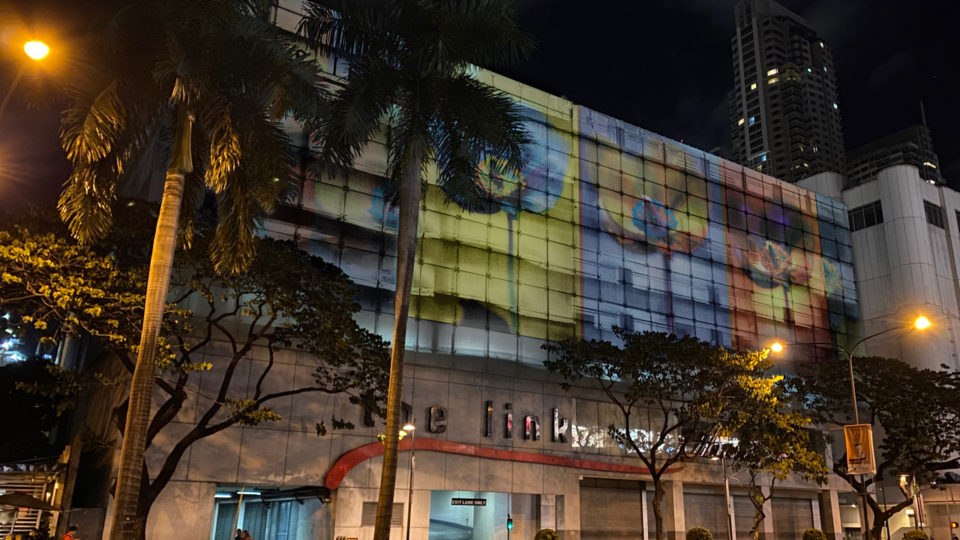There’s been a lot of buzz going on about this year’s Art Fair Philippines, the eight-year-running, three-day festival that aims to showcase the best of contemporary Filipino art and kicks off in the multi-level Makati car park the Link on Feb. 21.
Last year saw 30,000 attendees visit the five-level venue, and the fair’s organizers are expecting roughly the same turnout this year. This, despite the addition of newcomer fair “ALT: The Art Show Reframed” (more about that in Weekend Warrior) opening the week before.
Has the nearly decade-old Art Fair Philippines run out of new things to excite? Not quite. For one, Art Fair mainstay consultant Erwin Romulo is back on board and orchestrating the newest addition to the fair — films. The long overdue addition of the genre surprised even arts advocates like himself, Romulo told Coconuts Manila in a phone interview.
“But I guess it takes time for the art community, or at least the Art Fair, to recognize that film is a very vibrant, visual, and very important art form, especially in the Philippines. You can arguably say that it’s actually the most widely consumed visual art form by the public.”
Romulo is just one of the film program’s three curators, along with film critic Philbert Dy and film archivist Teddy Co.
A polymath of sorts, it’s hard to pin down Romulo’s expertise in a single field. To start with, he was a graduate of fine arts at the University of the Philippines, where he was “batch mates with the stars of our art scene — Poklong Anading, Nona Garcia, Louie Cordero, all of them.”
Romulo didn’t pursue art-making as a vocation, but spent many years writing for national print titles and was the pioneering editor-in-chief of the now-shuttered men’s magazine Esquire Philippines. He also scores music for a number of films, most recently for director Erik Matti’s HBO series Food Lore, and his upcoming crime-thriller film On the Job 2.
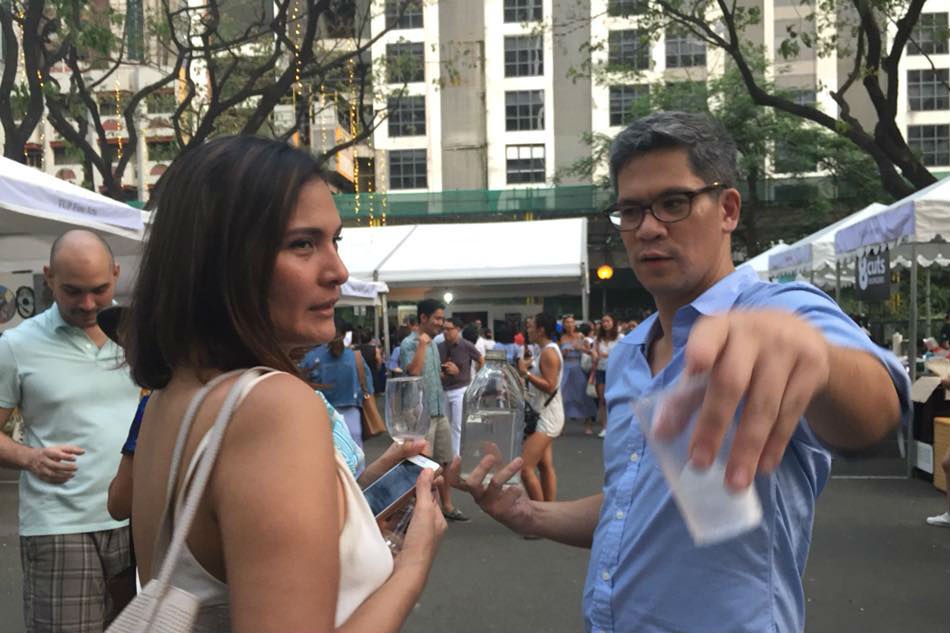
“[A]ll this curating, being creative director for certain festivals and also art exhibitions, that seems to have taken over. I mean, it’s not a career plan, it just happened,” he said.
He’s curated multiple exhibitions for Art Fair in the past. “I think that’s what I do, what I enjoy. I have to bring something that I guess no one else will do or propose. I guess because no one else does it, then I should.”
In his interview with Coconuts, Romulo spoke at length about filmmakers participating in the fair, a free public art screening that will kick off this weekend prior to the main event (which features, of all things, a film from the former couple James Reid and Nadine Lustre — known by the portmanteau JaDine), and the function of art.
“[T]here’s more. I have lots more up my sleeve, more surprises,” he said excitedly. “[I believe in] preserving the nature of what an event is. A movie premiere or a movie itself used to be such an event, now it’s something that’s so convenient that that kills some sort of the mystery.”
“For me, we’re in an age where everything is so accessible, that’s why film’s value is diluted… People think it’s too easy. So we’re trying to fight against that.”
The official dates for Art Fair are from the 21st to the 23rd, but we hear the film category is getting a head start this weekend?
Yes, the outdoor screening stars on Friday. So it’s part of the screenings for Art Fair, but it’s not happening on the Link. It’s happening on Ayala Tower 1, near the Ayala Triangle Gardens. So what we’re doing is we’ll be projecting films on the canopy of the [Makati] Stock Exchange, and then you’ll need to lie down to see it. We’ll put pillows there to encourage people to watch lying down. We tested that out on Tuesday, and for that one, you don’t need tickets, it’s free to the public.
So on Feb. 14 we’ll be screening [rom-coms] One More Chance and That Thing Called Tadhana. And on Feb. 15, we’re doing Sunday Beauty Queen, and of course Never Not Love You — because you know JaDine just broke up, so we need to give fans a place to congregate, to feel their hurt together.
So four films in two days?
[It] was actually supposed to be three days, but the budget didn’t allow it. Sunday Beauty Queen was supposed to be shown on a Sunday. [There were constraints] because it’s the first time Art Fair is doing it, but hopefully, now that they’ve seen what we can do, they’ll allow us [an additional day] in the future.
We’re the only [category] having a pre-event… This year, since the new film program is the new feature of the Art Fair, we requested for an outdoor screening. It wasn’t initially part of the plan, but when we found out that the dates were Feb. 14 and 15, me and [my fellow curator] Philbert thought we should take advantage of Valentine’s weekend. We should show films that are love stories. So all the concept behind it, the canopy, became organic after we got the date of when we’ll show the films.
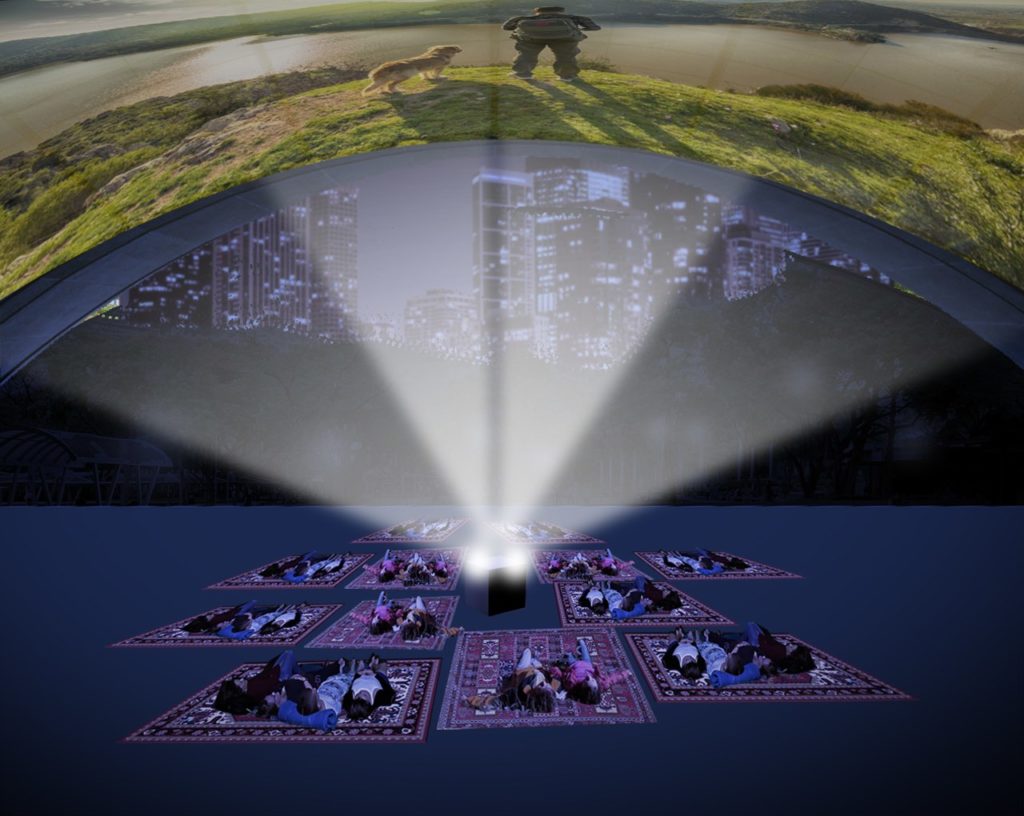
And it wasn’t a matter of showing just art films because it’s an art fair?
No. And I understand the question. But from the get-go — when me and Philbert proposed this two years ago, with Teddy Co — what we already envisioned was that there will be no distinction between narrative, experimental, feature-length, short feature, documentary, animation, indie, mainstream. We would just say these are the best films that we’re showing to you at this time, and this represents to us, the curators, the best of what the last 100 years of Philippine cinema could offer.
You have to know that most of the films that [Filipinos have] made over the last 100 years — about more than 90 percent or 95 percent, I don’t know the exact percentage — they’re all lost because we have no culture of preservation here in the country. That’s why in a way, it was important to look at what films we would see, and why we’re showing it. Plus because we know we’re in an art fair, part of it is to celebrate not just the last 100 years but to show the next hundred. We have different ways of doing that, and we’re not just presenting it as if you’re watching in a cinema.
What can we expect from the booth setup at the Link?
We have a different setup at the Link. It’s kind of the same as, if you’ve been to [the now-defunct indie cinema] Mogwai in Cubao X? So it’s kind of like that. It’s a booth, but we’ll also have pillows. It allows people to sit down. We’re not pretending to be a [real] cinema… We will be continuously showing films with no distinctions on genre. We’ll just say these are the best films, and you can debate us on that, but by the end of it, from Ayala Triangle to the Link, we’ll probably be showing almost 50 hours of cinema… which is more than most theaters in the Philippines will show in a year.
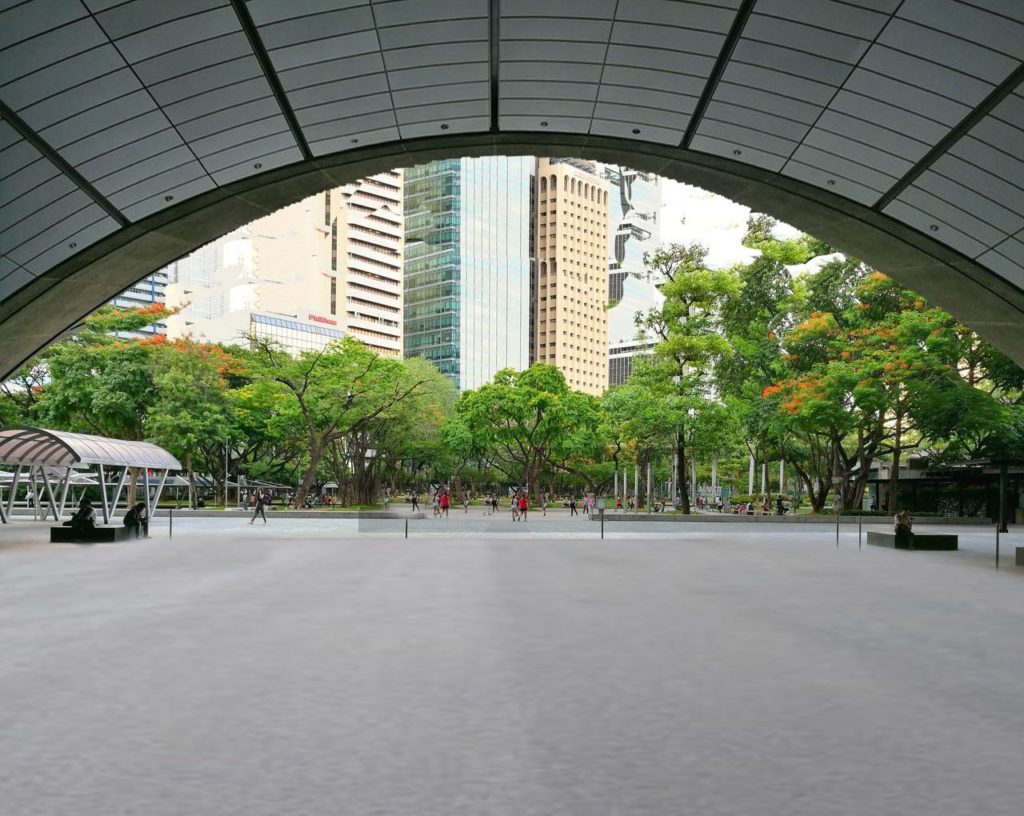
What’s the curating dynamic like between you, Philbert Dy, and Teddy Co? Is it easier or more difficult when there’s three of you?
Well, there’s three of us because it’s such a big scope. I don’t pretend to know everything about Philippine cinema. Teddy Co is probably the most important film archivist, historian, and researcher that the Philippines has ever had. Because of him we still have a lot of the films that we thought were lost. We also have an appreciation for how films have been made in the past. I have to credit him for pioneering efforts for the regional cinema. He was the one who said we should stop thinking of Metro Manila as the only place where films in the Philippines can be made.
And then Philbert Dy. I mean, he sees almost every, if not all the films that come out in the Philippines, in the theaters at least. So on the ground, I can’t think of anyone better attuned to what the contemporary filmmaking scene is these days than Philbert. Because he’s a film critic. He goes to all the festivals. Every Wednesday at least, you know you won’t be able to talk to Philbert because he’s at the cinemas.
You can consider all of us knowledgeable in the area. But what we share is we think film should be in the Art Fair and I think since it is considered the centennial for Filipino movies, it’s appropriate to have it now.
Now that we’re at the centennial mark of Philippine cinema, in terms of personal expectations, do you think Filipino films are where we should be at right now?
Well, I think we’re at a great golden age of Philippine filmmaking. I mean the art films are being seen not only here in the Philippines, but all over the world. We have acclaimed masters like Lav Diaz, who is acclaimed abroad. We have younger talents like Mikhail Red making inroads into popular cinema online but also in theaters — very commercial but very, very capable, quality films. There’s a lot, but what’s really beautiful are the films from regional cinema.
Last year, my favorite local film came from Tuguegarao it’s called Cleaners. That’s fantastic, you should see it, they’re about to show. I don’t know the director personally, but his name is Glenn Barit. We wanted to show them at Art Fair but they’re preparing for their own wide release at theaters. I think they really wanted to save up for their release of the film then.
Do you have personal favorites that will be screening at the fair?
Among the three of us [curators], there’s so much. Personally, I’ve asked [Filipino animator] Roxlee to come onboard. He conducts an animation workshop for children, so I’ve asked him to bring the best of what the workshop’s done over the last year and a half. And then the young children filmmakers themselves will present their films on a Sunday. We’ll give them an hour to show the animated—these are kids that are six years old, four years old.
I also asked a collective called Lost Frames to come in. Basically they don’t even consider themselves filmmakers, they prefer the term moving image. So we’re giving them two hours to show the stuff that they’ve been showing, but these are really away from commercial cinema. Really cutting, and really new. They’re pushing against the format of what you can consider cinema is.
One other addition is Raymond Red. People think of him as the father of the very famous Mikhail Red, but I’d like to point out that Raymond Red himself is such an original filmmaker. He isn’t just the first Palm D’Or winner that the country’s ever produced. The short films he’s made since the ‘80s [and] until recently, especially the experimental films that he’s made, they’re really highly original and they’re very Filipino.
None of the screenings are announced… Because we don’t pretend to be a theater, I don’t think people will be [going] to watch a screening in an art fair. So basically we’re just gonna show films, and then if you miss it, you miss it. And if you missed something that was so special, well, tough luck. You should just be hanging out at the booth.
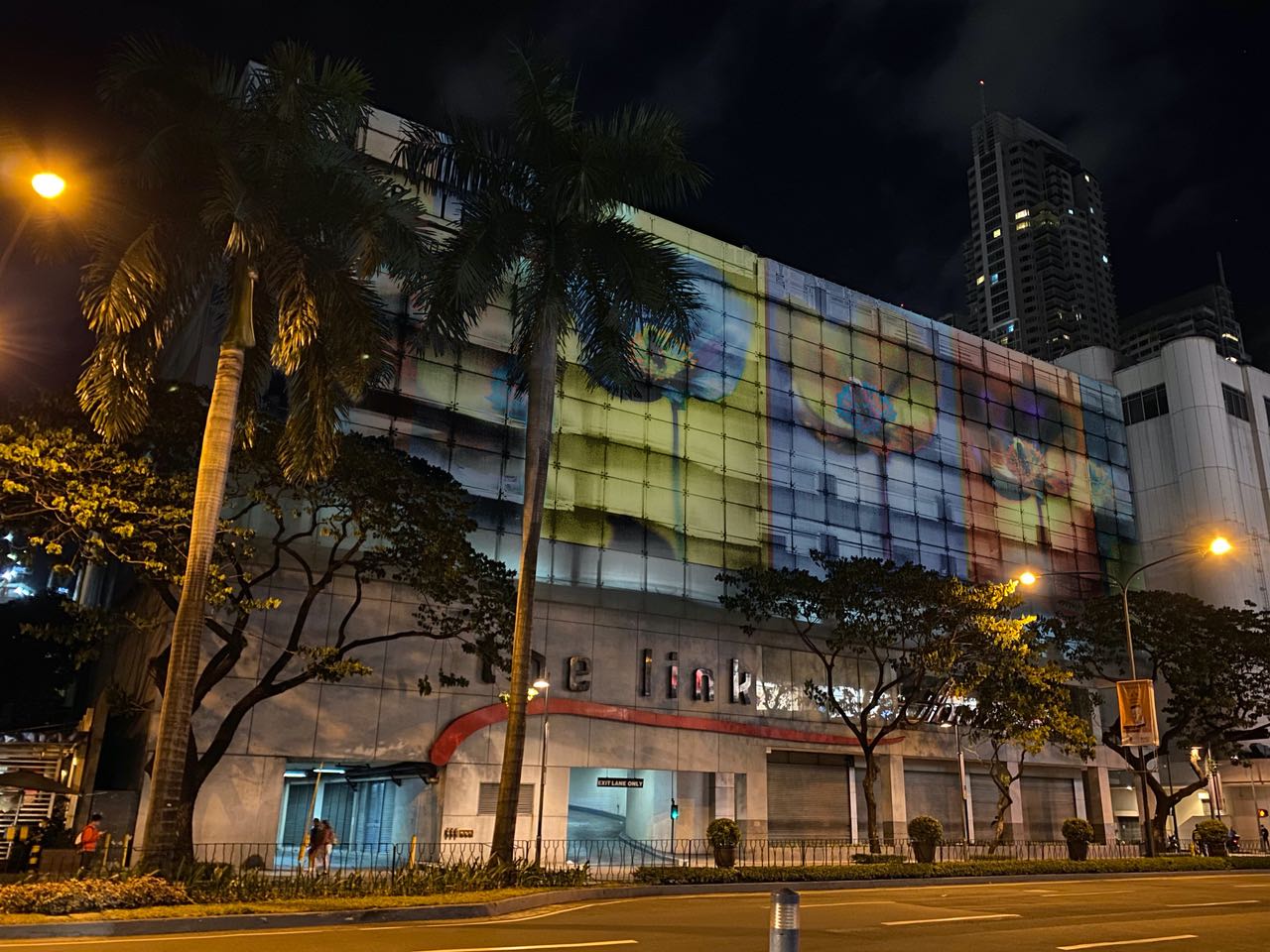
Besides the film category, what else about the Art Fair this year excites you?
There are a couple of things, like the artist-run spaces. There are new fairs opening up from small spaces. Limbo, which I know is an interesting club in Poblacion.There’s [Quezon City-run space] Project 20. And then there’s a small gallery that [director] Jun Sabayton is bringing in with Cebuano artists, Cebuano Art. These are smaller spaces and they’re participating in the Art Fair for the first time.
Do you go to the Art Fair every year?
I’m not sure I skipped, but I think I drop by every year. But I only really stay if I’m participating… I mean there are so many shows. In a way, the Art Fair is good because it’s a venue where all contemporary art is there. At least, it’s a good one-stop that you can actually see what’s happening in contemporary art.
Do you think having a lot of art exhibits these days make newcomer fair ALT redundant? What were your feelings when they first announced the alternate art fair?
No, I don’t think that at all. My first reaction was, why not? I don’t think anyone has a monopoly on the best of contemporary art. I think we have to recognize that being an archipelago has affected our thinking in a way as a people… Because I think it’s very Filipino to have groups forming from different groups. It’s better to scatter us and never to contain us in one place.
Do you think there’s a bigger audience for art now compared to in the past?
I think there’s definitely an audience. For me, I think I’ve started to come to the realization — because we always say that we have to educate the audiences on how to appreciate art — but I’m beginning to believe that it actually should be the other way around. I don’t think it’s the audience that need to be educated. We should educate institutions and the galleries, the gatekeepers of art, of what their audiences should respond to.
The point is, I’m beginning to see that the people who are the custodian of art, it shouldn’t be their job to educate the audience about art. I think they should learn from them too.
What about criticisms on how people experience art? Selfie-taking, for instance, any thoughts on that?
My view on that is that maybe that’s how they appreciate it. It’s maybe a very Filipino way? I’m not sure. Because most of the people, they’re not there to buy art, that’s the best way that they can actually be part of that experience. Personally, I don’t take any selfies, and not even just in art fairs — in real life. But I don’t negate that it’s a valid form of appreciation; I don’t really see it as a bad thing at all.
You mentioned that Art Fair film debuting just this year surprised you, and that it’s been two years in the making. Why do it now, though?
I haven’t stressed this enough, but I have to admit that the reason I had the idea to propose this film program is because two years ago, when I proposed this with Philbert, I thought it was also going to be 10 years since [film critic and film journalist] Alexis Tioseco was murdered.
And me, I can’t think of anyone, no filmmaker even, that have done more for Philippine cinema in the last 11 years now than he did.

[Tioseco was editor and founder of Criticine, hailed by Filmmaker magazine as “arguably the most influential, intelligent blog on Southeast Asian Cinema.” He passionately championed Filipino and Southeast Asian films. He and his girlfriend Nika Bohinc were murdered following a robbery in their Quezon City home in 2009.]
Alexis was instrumental in broadening the recognition and appeal of Filipino films to the world in general. He didn’t live to see it, though. So that’s a personal reason on my part. He was a very dear friend of mine, and any chance to put his legacy, what he did out there, I’d take that — and that’s what the function of art is in the end.
The function of art?
We always debate what the function of art is. They think it seems useless because it’s not food, clothing, and shelter. But I think one thing I could say is it’s about remembering what we would rather forget sometimes. It’s a good repository of what we may have forgotten and shouldn’t have. So that’s really my reason if I’m being very honest.
